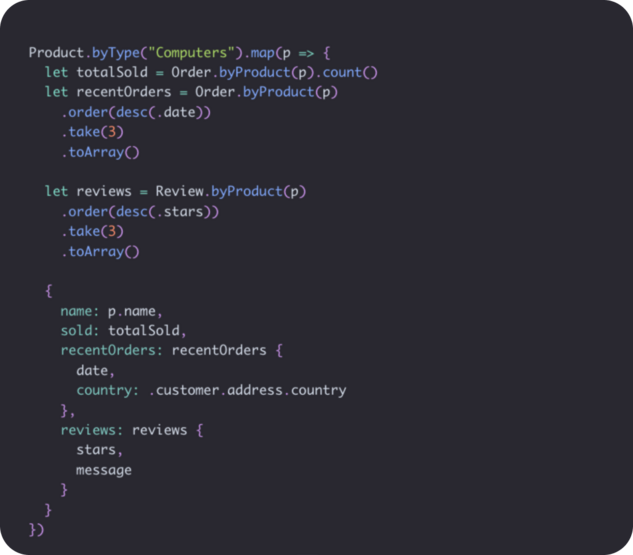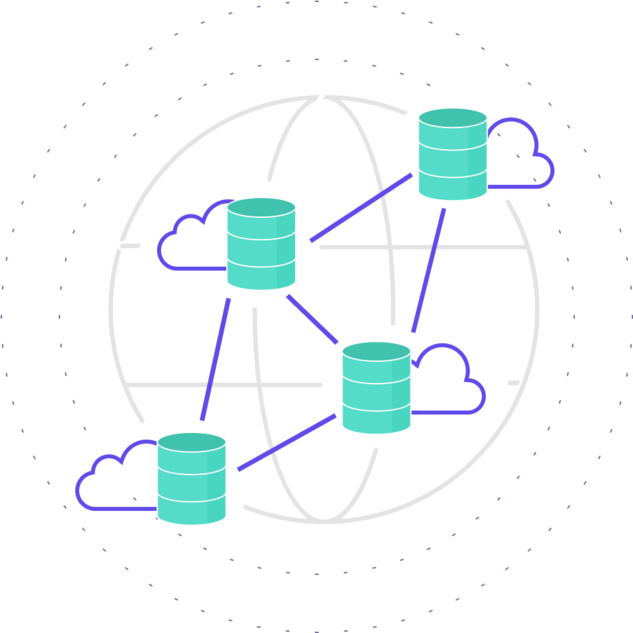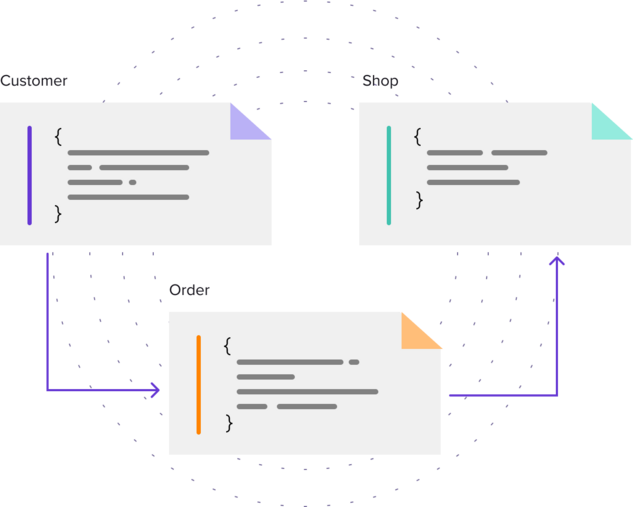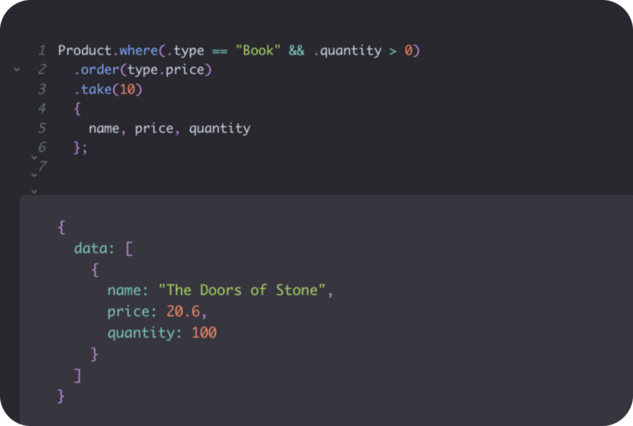Document-Relational Data Model
Combine the power of sophisticated querying, schema enforcement, and strong consistency with the flexibility of a JSON data model




Introduction to Fauna
Explore Fauna in 2 minutes: Explore Fauna's robust features in 2 minutes: Document flexibility with relational consistency & querying power, API delivery model, automatic distribution & replication, modern and identity-driven security, native multi-tenancy, and more.

Document-Relational Model
Fauna's document-relational model combines the flexibility of document storage with the robust capabilities of relational databases. Data in Fauna is stored as documents, making it easier for developers to visualize and manage their data structures, leading to an intuitive mental model and greater development agility. Meanwhile, Fauna maintains powerful relational features, including strong consistency, advanced querying capabilities like joins and foreign keys, and full schema enforcement. This approach allows developers to build applications with the ease of a document database while leveraging the reliability and complexity management of a relational system, all within a unified platform.
Relational Power
Developers can leverage declarative queries, utilizing robust filtering and joining capabilities. Declarative queries allow developers to efficiently transform query results and traverse relationships to access associated data, eliminating the need for custom join logic in application code and enhancing application performance.
“Fauna is the reason we are still in business. There is not enough good stuff I can say about the folks over there.” Read case study

Alice
From Wonderland


Multi-Region, ACID Consistency
Fauna ensures strict ACID (atomicity, consistency, Isolation, durability) guarantees within transactions, providing robust data integrity and reliability for applications across multiple regions. This level of consistency ensures data accuracy and maintains transactional integrity, making Fauna a trusted choice for mission-critical applications.
JSON Documents, Flexible Schema
A JSON document model provides the agility and adaptability needed in early application development while flexible schema support allows you to add structure over time. This unique combination of flexibility and scalability empowers businesses to evolve their data models and applications seamlessly.


Modern Query Language
The Fauna Query Language (FQL) empowers developers with the ability to access and manipulate data using complex logic. FQL not only allows you to store data in documents but also enables intuitive modeling of data as separate entities, akin to relational data modeling. This comprehensive language brings together powerful data access and flexible data structuring.

Capabilities


Native Joins
Fauna’s unique document-relational engine natively supports joins, enabling optionality in data models. Embedded or related, your choice. By separating the compute layers of the engine from the data storage layer, as well as making every storage call extremely fast, Fauna’s engine traverses multiple documents in one query with blazing speed. Like a relational database, push down a single query and skip the network latency of multiple interactions.


Strong Consistency
Fauna’s Distributed Transaction Engine provides strictly serializable transaction isolation by-default, ensuring that all reads and writes are consistent across three replicas and reliable. Fauna’s ACID transactions guarantee that your applications can always trust the integrity of their data. Meanwhile, Fauna’s concept of Region Groups gives you control over where your data resides, which you can use to comply with data locality regulations, such as the General Data Protection Regulation (GDPR).

Document Storage
Fauna stores data as JSON-like documents, offering flexibility and a faster development lifecycle by allowing you to structure data in a way that best suits your applications, rather than forcing your applications to fit a rigid schema. Each document, representing a single record in a Fauna database, can contain various data types and is grouped within collections. This document-centric model not only simplifies data management but also supports advanced features like versioning and temporal querying, enhancing both development speed and adaptability.

Schema Flexibility & Enforcement
Fauna enables in-database schema definition and enforcement, as relational databases do, with the expanded ability to dial in the level of enforcement appropriate to your application. Document Types support both static and dynamic typing, enabling development teams to start with a flexible schema, and introduce stricter type controls as application requirements evolve. This gradual typing system supports a flexible yet controlled approach to data integrity.


Get started building with Fauna
Explore resources that can help get you up and running in minutes.
Multi-tenant SaaS Sample App
Learn how to build a multi-tenant, multi-region SaaS app without ops using Fauna and AWS
BUILD THE SAMPLE APP
New to Fauna Query Language?
This guide can help you get started with FQL in under 10 minutes.
READ MORE
Workshops
Learn how to build complete applications using technology like AWS, Cloudflare, and more.
EXPLORE THE WORKSHOPS
FAQs
Have other questions? Feel free to contact us, or browse our documentation.

Get started building with Fauna
Explore resources that can help get you up and running in minutes.
Multi-tenant SaaS Sample App
Learn how to build a multi-tenant, multi-region SaaS app without ops using Fauna and AWS
BUILD THE SAMPLE APP
New to Fauna Query Language?
This guide can help you get started with FQL in under 10 minutes.
READ MORE
Workshops
Learn how to build complete applications using technology like AWS, Cloudflare, and more.
EXPLORE THE WORKSHOPS
FAQs
